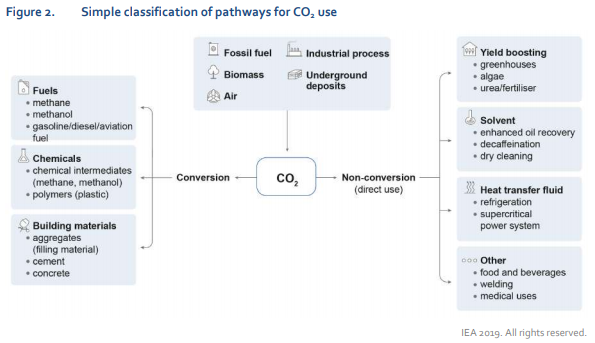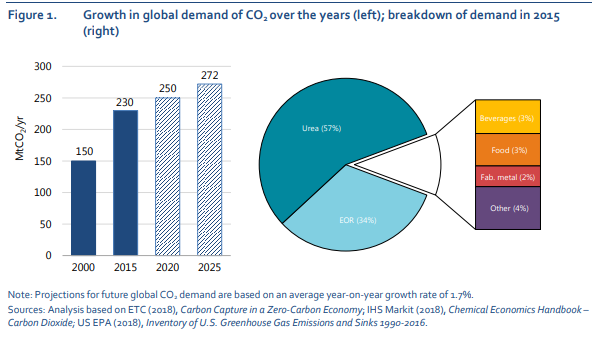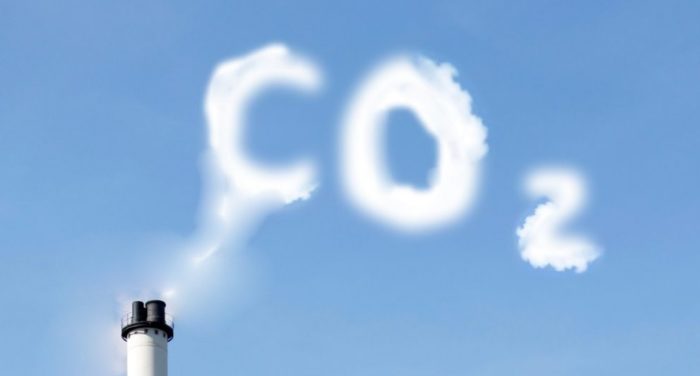IEA published the “Putting CO2 to Use” report focusing on the new opportunities of carbon dioxide use in the development of products and services. Specifically, those opportunities attract governments, industry and the investment community to pay attention in the issue, using CO2 to boost the yields of biological processes.
Defending the climate change and reducing its impacts are the main causes for this increased interest. The report presents the near-term market potential for five major categories of CO2-derived products and services such as : fuels, chemicals, building materials from waste, and lastly CO2 use to expand the biological processes.
The 5 key considerations are the following:
- the source of CO2 (from natural deposits, fossil fuels, biomass or the air)
- the product or service the CO2-based product or service is displacing
- how much and what form of energy is used to convert the CO2
- how long the carbon is retained in the product
- the scale of the opportunity for CO2 use.

The report highlights that using CO2 for products doesn’t necessarily reduce the emissions, while quantifying the potential climate benefits is complex and sometimes challenging, as it demands a life cycle approach. At the same time the climate benefits associated with CO2 use, usually occur from replacing a product/service with one with higher life-cycle CO2 emissions.
May the interest of CO2 is on its contribution to climate change, the report further shows that CO2 it can also be a commercial input to a variety of products and services. Around 230 million tonnes of CO2 are used each year, with the largest consumer be the fertliser industry, and then the oil sector. Moreover, about two-thirds of current CO2 needs comes from the North America marking 33%, following China with 21% and then Europe with 16%.

Overall, CO2 emissions is a major factor, that all industries are facing at the moment. DNV GL in its recent report focused on how to recycle CO2, looking for ways to capture the emissions and store them, while proposing the launch of negative emissions technologies to tackle the issue.
To see more, you may click on the PDF herebelow





























































